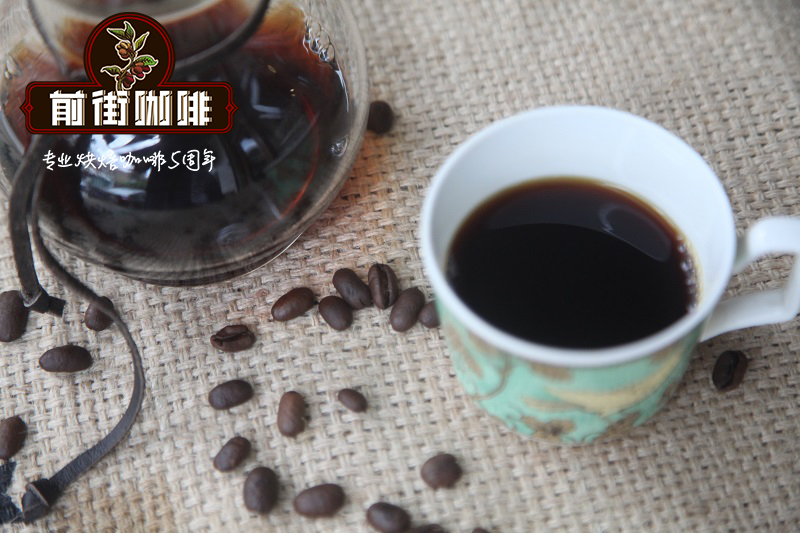Colombia COE Award-winning estate Las Cochas Las Cajes Farm Introduction

Professional coffee knowledge exchange more coffee bean information please follow the coffee workshop (Wechat official account cafe_style)
Colombia is currently the third largest coffee producer in the world, originally second only to Brazil, but in recent years Vietnamese coffee, which specializes in the production of Robusta stout beans, has surpassed Colombia's runner-up status. Colombia first planted so-called commercial beans in the mid-1830s. Coffee beans accounted for the largest share of export crops in the 20th century. The local mountainous terrain, coupled with a variety of tropical microclimate, provides an ideal environment for coffee cultivation. The national planting area is about 875000 hectares. The main varieties include Kaddura Caturra, Colombian Colombia, iron pickup Tipica, bourbon Bourbon, elephant bean Maragogype, and Tabi. Farms and cooperatives across the country, big or small, are distributed in more than 500000 towns and 14 major coffee producing areas-including Nalinglong Nari ñ o, Cauca of Cauca, Meta of Mehta, Huila of Uila, Tolima of Tolima, Quindio of Kindio, Caldas of Caldas, Risaralda of Lisalda, Antioquia of Antioquia, Valle of Valley, Cundinamarca of Cundinamaka, Boyac á of Boyaca. Santander in Santander province and Norte de Santander in northern Santander province. A total of 2 million Colombians depend on coffee cultivation for their livelihood, contributing 12.5 per cent to the gross domestic product of local agriculture, while 75 per cent of coffee bean production is sold abroad, making it the main source of Colombia's foreign exchange earnings.
Traditionally ripe coffee cherries are treated with water, although the Coffee Research Center in Colombia has developed an ecological protection system in the past 15 years, which requires little water and can reduce local water pollution by 90%. And reduce water consumption by 95%, this drying method can not only effectively maintain the ecology, but also ensure stable coffee quality. This drying method is unique in Colombia, where farmers on small farms sprinkle shell beans on the flat roofs of their homes to dry in the sun, or use plastic sheds in colder climates at higher elevations. Colombia is so rich in climate temperature diversity that coffee can be grown and produced almost all year round. The main harvest time is from October of each year to February of the following year, and November and December are harvest periods. The second harvest period is relatively late, which varies according to the microclimate of each producing area.
Las Cochas Raskages' farm owner, 64 years old, was born in Samaniego city, Shamanigo, in Nagliang Nari ñ o. The farm is run by the couple and their children. Because it is a family farm, Mr. Melo works very hard to make progress, hoping to give his children and grandchildren a good education and teach them the skills they depend on to continuously improve the family's living conditions.
Las Cochas Las Kajes Farm, 12 kilometers from Samaniego city in Shamanigo, is protected by local plants and is a traditional farm where coffee beans are treated with traditional equipment and dried in the natural sun. Farm owners are very active in community-organized activities, actively participate in seminars on social care or coffee-related skills, and spare no effort to protect the local forest and environment.
Coffee Characteristics Coffee Features:
Variety varieties: Caturra Kaddura 70% Jade 30% Colombia Colombia
Processing System treatment method: Washed Coffee washing method
Important Notice :
前街咖啡 FrontStreet Coffee has moved to new addredd:
FrontStreet Coffee Address: 315,Donghua East Road,GuangZhou
Tel:020 38364473
- Prev

Suggestions for coffee brewing in Sonora Manor, Costa Rica _ flavor characteristics of black honey in Sonora Manor
Professional coffee knowledge exchange more coffee bean information please follow the coffee workshop (Wechat official account cafe_style) 5 Costa Rica Sonora Manor Bourbon America region Costa Rica Sonora Manor Bourbon Sun state: central Valley processing Plant: Mishra-Valley Nine Paleo altitude: 1500-1650 beans: bourbon treatment: sun flavor: caramel aroma, high sweetness
- Next

Costa Rica Diamond Manor Coffee how to make _ Diamond Manor Honey treatment Coffee brewing suggestion
Professional coffee knowledge exchange more coffee bean information please follow the coffee workshop (Wechat official account cafe_style) [Costa Rican Coffee Tara Pearl Diamond Mountain Manor] (deep roasting in washing) soft orange notes, toast, caramel can be sweet, taste clean, mild taste, ideal acidity, unique strong anaerobic fermentation, as the name implies, in the absence of oxygen.
Related
- Detailed explanation of Jadeite planting Land in Panamanian Jadeite Manor introduction to the grading system of Jadeite competitive bidding, Red bid, Green bid and Rose Summer
- Story of Coffee planting in Brenka region of Costa Rica Stonehenge Manor anaerobic heavy honey treatment of flavor mouth
- What's on the barrel of Blue Mountain Coffee beans?
- Can American coffee also pull flowers? How to use hot American style to pull out a good-looking pattern?
- Can you make a cold extract with coffee beans? What is the right proportion for cold-extracted coffee formula?
- Indonesian PWN Gold Mandrine Coffee Origin Features Flavor How to Chong? Mandolin coffee is American.
- A brief introduction to the flavor characteristics of Brazilian yellow bourbon coffee beans
- What is the effect of different water quality on the flavor of cold-extracted coffee? What kind of water is best for brewing coffee?
- Why do you think of Rose Summer whenever you mention Panamanian coffee?
- Introduction to the characteristics of authentic blue mountain coffee bean producing areas? What is the CIB Coffee Authority in Jamaica?

